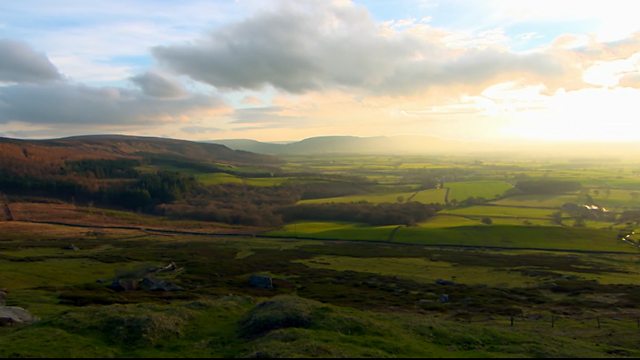Countryfile – Westonbirt at Autumn: Autumn is the season when nature truly shows off its beauty, and there are few places that capture this spectacle quite like Westonbirt, The National Arboretum, in Gloucestershire. Imagine a kaleidoscope of colors stretching as far as the eye can see—2,500 different species of trees, gathered from every corner of the world, transforming into a brilliant mosaic of reds, oranges, and golds. It’s the kind of sight that stops you in your tracks, leaving you feeling small in the face of such splendor.
John Craven takes us on a journey through this enchanting autumn landscape, exploring not just the scenery, but also the fascinating stories that are hidden among the leaves. Autumn is when Westonbirt truly shines, a time when the arboretum transforms into an outdoor gallery painted by nature itself. And John is here to uncover both the science and the history behind this seasonal magic.
He starts by diving into a bit of Victorian history—a time when Westonbirt’s “autumn colour parties” were the highlight of the year. Picture ladies in elegant gowns and gentlemen in their finest attire, strolling among the blazing treetops, marveling at the spectacle. These gatherings weren’t just social events; they were celebrations of the natural world, reflecting a genuine awe for the beauty of nature that was so characteristic of the era. The same appreciation endures today, drawing visitors who come to revel in the sheer splendor of the season.
But Westonbirt isn’t just about celebrating autumn’s grandeur. There’s a lot of hard work behind the scenes, and John introduces us to the dedicated team working to protect this beloved landscape. Some of the arboretum’s older trees, magnificent giants that have stood for centuries, face a growing threat from winter storms. We meet the arborists tasked with safeguarding these ancient trees—trees that have borne witness to countless autumns—by reinforcing their branches and caring for them with a kind of reverence that echoes the care given to historical treasures.
As we wander through the arboretum, John takes a moment to discuss the science behind the stunning colors that take over the landscape each autumn. Why do leaves change from green to brilliant shades of scarlet and gold? It turns out, there’s more to it than just cooler temperatures. The changing colors are part of a complex process, a kind of preparation for the winter months.
As the days shorten, trees begin to break down the chlorophyll in their leaves, revealing pigments that were there all along—just waiting for their moment to shine. It’s a bittersweet reminder that the beauty of autumn is also a sign of things coming to an end, as trees prepare to rest for the colder months.
To preserve the legacy of Westonbirt for future generations, John also takes part in planting a rare native Sorbus tree. This isn’t just about adding a new tree to the collection; it’s part of a larger mission to protect endangered species and ensure that Westonbirt continues to thrive. Trees like the Sorbus, native to the UK, are vulnerable due to habitat loss and climate change, and every new sapling planted is a step towards preserving biodiversity. The act of planting feels hopeful—a promise that the beauty we enjoy today will still be here for generations to come.
Countryfile – Westonbirt at Autumn
Autumn at Westonbirt is not just about watching the leaves change; it’s a time for stories. In celebration of the season, we revisit some memorable moments from the Countryfile archives, stories that have unfolded across the UK in past autumns. These include farmers harvesting late crops, wildlife preparing for the colder months, and communities coming together to celebrate the harvest. Each story is a testament to how deeply connected we are to the natural rhythms around us—how, even in a modern world, we continue to be captivated by the turning of the seasons.
There’s something deeply grounding about experiencing autumn in a place like Westonbirt. It’s a reminder of the bigger picture—that despite the hustle and bustle of daily life, there are ancient cycles at play, cycles that continue regardless of our busy schedules. Strolling through the arboretum, with leaves crunching underfoot and the crisp air carrying the scent of pine and earth, you can’t help but feel part of something timeless. It’s these moments that bring us closer to nature, reminding us of our place within it.
So, whether you’re fascinated by the history, intrigued by the science, or simply looking to be awed by nature’s beauty, Westonbirt in autumn is an experience like no other. John Craven’s visit invites us all to slow down, take a breath, and soak in the splendor of the season. The magic of Westonbirt is that it makes us realize—autumn isn’t just something to see, it’s something to feel, a celebration of change, and a reminder of the beauty in every ending and every new beginning.
Conclusion Countryfile – Westonbirt at Autumn
As our journey through Westonbirt draws to a close, it’s clear that this arboretum is more than just a collection of trees; it’s a living testament to the harmony and beauty of nature. The vivid hues of autumn, with their fiery reds and golden yellows, are a spectacle that captures the imagination, but they also whisper deeper truths—of change, resilience, and the eternal cycles that govern our world. These trees remind us that every ending paves the way for a new beginning, just as autumn’s brilliance gives way to winter’s quiet promise of rest and renewal.
John Craven’s exploration of Westonbirt has shown us that nature’s wonder isn’t just a passive scene to be admired. It’s a story to be told, a living canvas that changes with every season, painting memories that last far beyond the falling of the leaves. The dedication of the arborists and conservationists working tirelessly behind the scenes also reminds us that preserving this beauty is a responsibility we all share. It’s a delicate balance—one where every effort, no matter how small, contributes to the tapestry of life that surrounds us.
Autumn at Westonbirt is a call to reconnect—to step away from the rush of daily life and witness the magnificence that unfolds when nature is allowed to flourish. It’s about understanding our role as caretakers of the environment and cherishing these fleeting moments of beauty, knowing they’re part of something much greater. As you leave Westonbirt, with leaves swirling around your feet and the crisp autumn air filling your lungs, you carry with you not just memories, but a renewed sense of wonder and a deeper appreciation for the natural world.
So next time the leaves begin to turn, find a moment to step outside, breathe in the changing air, and remember Westonbirt’s timeless lesson: that there is beauty in every transformation, and there’s a story waiting to be discovered in every corner of nature. Let Westonbirt be a reminder to slow down, look closer, and embrace the magic of the seasons—for every ending, after all, is just a beautiful beginning in disguise.
FAQ Countryfile – Westonbirt at Autumn
Q: What is so special about Westonbirt Arboretum in autumn?
A: Westonbirt Arboretum in Gloucestershire becomes a canvas of breathtaking autumn colors. Moreover, with 2,500 tree species from around the world, it offers a unique display of fall foliage. You’ll witness a vibrant mosaic of reds, oranges, and golds, making it a truly awe-inspiring spectacle.
Q: Can you tell me more about these “autumn color parties” mentioned in the article?
A: Certainly! In the Victorian era, Westonbirt hosted “autumn color parties.” These were social gatherings where people admired the stunning fall foliage. Furthermore, they celebrated the beauty of nature in a way that reflected the era’s appreciation for the natural world. Today, visitors still come to enjoy the same seasonal splendor.
A: Why do the leaves change color at Westonbirt?
Q: The changing colors are a result of a fascinating scientific process. As the days get shorter, trees break down chlorophyll in their leaves. Consequently, this reveals hidden pigments that create the vibrant reds and golds we associate with autumn. It’s a beautiful reminder of nature’s cycle of renewal.
Q: What is being done to protect the trees at Westonbirt?
A: Westonbirt’s team of arborists works diligently to protect the trees, especially the older ones. These trees face threats from winter storms. Therefore, the arborists reinforce branches and provide care to ensure these magnificent giants remain for future generations to enjoy.
Q: Is there anything else to do at Westonbirt besides admiring the trees?
A: Absolutely! Westonbirt offers more than just stunning scenery. You can explore the arboretum’s history, learn about the science of trees, and even participate in conservation efforts. In addition, you can enjoy the peaceful atmosphere and reconnect with nature. Westonbirt is a place to slow down and appreciate the beauty of the natural world.




